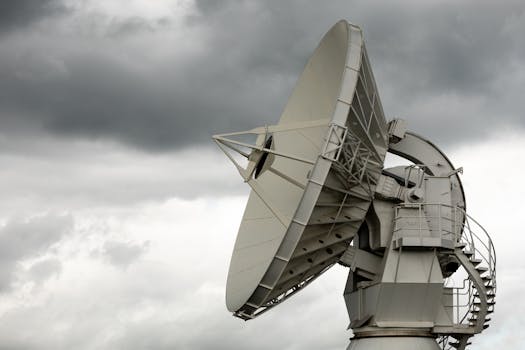
Satellite Development: A Historical Overview
Satellite development has a rich and fascinating history, spanning over six decades. The concept of an artificial satellite dates back to the early 20th century, but it wasn’t until the 1950s that the first satellite was launched into space. Satellite development has come a long way since then, with significant milestones and advancements in technology. In this article, we will explore the history of satellite development and key milestones that have shaped the industry.
The first artificial satellite, Sputnik 1, was launched by the Soviet Union on October 4, 1957. This historic event marked the beginning of the space age and sparked a competitive race between the United States and the Soviet Union to explore and dominate space. The success of Sputnik 1 was followed by the launch of Sputnik 2, which carried the first living creature, Laika, into space. These early satellites paved the way for future space exploration and the development of more advanced satellites.
The Early Years of Satellite Development
The early years of satellite development were marked by significant achievements and setbacks. The United States launched its first satellite, Explorer 1, on January 31, 1958. This satellite was designed to study the Earth’s radiation belt and discovered the Van Allen Radiation Belt. The Soviet Union continued to push the boundaries of space exploration, launching the first human, Yuri Gagarin, into space on April 12, 1961. The United States responded by launching the first American in space, Alan Shepard, on May 5, 1961.
The 1960s saw significant advancements in satellite technology, with the development of communication satellites, weather satellites, and navigation satellites. The first commercial communication satellite, Intelsat 1, was launched on April 6, 1965, and provided the first transatlantic television transmission. The first weather satellite, TIROS-1, was launched on April 1, 1960, and provided the first television images of the Earth from space.
Modern Satellite Development
Modern satellite development has been marked by significant advancements in technology and the expansion of satellite applications. The development of microsatellites and nanosatellites has made it possible for smaller companies and organizations to launch their own satellites into space. The use of satellite constellations, such as the Iridium and Globalstar constellations, has enabled global communication and navigation services.
The launch of the Hubble Space Telescope in 1990 marked a significant milestone in satellite development, providing unprecedented images of the universe and expanding our understanding of the cosmos. The development of satellite-based Earth observation systems, such as Landsat and MODIS, has enabled scientists to study the Earth’s climate, vegetation, and natural resources in unprecedented detail.
Conclusion
In conclusion, the history of satellite development is a rich and fascinating story, marked by significant milestones and advancements in technology. From the first artificial satellite to modern advancements in space exploration, satellite development has come a long way. As we continue to explore and push the boundaries of space, it is essential to remember the historic achievements and milestones that have shaped the industry. The future of satellite development holds much promise, with ongoing advancements in technology and the expansion of satellite applications.


